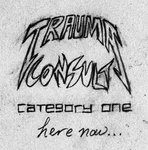Last week's edition of NEJM had a report on the ability of MRI to detect clinically occult breast cancers in the contralateral breast of patients diagnosed with breast cancer. The link can be accessed here...
This multi-institutional study assessed patients with unilateral breast cancers with a normal mammogram performed in the the contralateral breast. 1007 patients were enrolled at 25 sites; 987 patients were eligible, and 969 participatated with the study. Among index lesions, 58% had infiltrating ductal carcinoma, 20% had DCIS, and 10% had lobular carcinoma.
After evaluation of the contralateral breast using MRI, 33/969 women were diagnosed with breast tumors within the following year; 30 of these lesions were identified by MRI.
Overall, the sensitivity of breast MRI in this population was 91% (CI 76-98%), the specificity was 88% (CI 86-90%), the negative predictive value was 99% (CI 99-100%), and the positive predictive value was 21% (14-27%). The specificity and PPV were significanly higher for postmenopausal women than premenopausal or perimenopausal women.
Positive MRIs resulted in recommendation for biopsy in 135 women; biopsies were performed in 121/969 women (12%). Among the 30 cancers detected, 40% were DCIS and 60% were infiltrating ductal carcinomas (94% T1, 6% T2).
So overall, there was a 3% rate of detection of occult cancers, and a negative biopsy rate of 9%. 25% of biopsies were cancers... It is uncertain how this data would translate to survival benefit.
However, because of this and other reports, the American Cancer Society has provided new recommendations for the use of screening MRI in high risk populations. Here's the open access pdf!
Here, MRI would be recommended as an adjunct to screening mammography. It also shouldn't be performed unless the facility has the capacity to perform MRI-guided biopsies.
In what populations does the ACS recommend Screening Breast MRI based on evidence?
BRCA mutation
First-degree relative (untested) of BRCA positive patient.
Life-time risk calculation >20-25%
In what populations does the ACS recommend Screening Breast MRI based on expert / consensus opinion?
Radiation to the chest between ages 10-30
Li-Fraumeni Syndrome and 1st degree relatives
Cowden Syndrome and 1st degree relatives
Bannayan-Riley-Ruvalcaba Syndrome and 1st degree relatives
What is Li-Fraumeni Syndrome?
An autosomal dominant disease caused by p53 mutation, resulting in predisposition to sarcomas, breast cancers, brain tumors, adrenocortical tumors, as well as numerous others (gastric, pancreatic, ovarian, melanomas, lymphomas...)
What is Cowden Syndrome?
An autosomal dominant disease caused by PTEN mutation, resulting in multiple hamartomatous neoplasms.
What is Bannayan-Riley-Ruvalcaba Syndrome?
Another disease caused by PTEN mutation, resulting in neonatal overgrowth, macrocephaly, lipomas, hemangiomas, lymphangiomas, and hamartomatous polyposis.
In what populations does the ACS not recommend screening Breast MRI?
Women at less than 15% lifetime risk of breast cancer.
They recommended the BRCAPRO and Claus models for calculating the risk, which should be based primarily on family history and genetics for breast and ovarian cancer syndromes. The Gail model was not recommended for determining risk for MRI purposes because it doesn't take account an early age of onset of family members, or 2nd degree relatives with breast cancer.
Late... SG
Sources:
Lehman CD, Gatsonis C, Kuhl CK, Hendrick RE, Pisano ED, Hanna L, Peacock S, Smazal SF, Maki DD, Julian TB, DePeri ER, Bluemke DA, and Schnall MD for the ACRIN Trial 6667 Investigators Group. MRI Evaluation of the Contralateral Breast in Women with Recently Diagnosed Breast Cancer. NEJM 2007; 356(13): 1295-1303.
Smith RA. The Evolving Role of MRI in the Detection and Evaluation of Breast Cancer. NEJM 2007; 356(13): 1362-1364.
Saslow D, Boetes C, Burke W, Harms S, Leach MO, Lehman CD, Morris E, Pisano E, Schnall M, Sener S, Smith RA, Warner E, Yaffe M, Andrews KS, and Russell CA for the American Cancer Society Breast Cancer Advisory Group. American Cancer Society Guidelines for Breast Screening with MRI as an Adjunct to Mammography. CA Cancer J Clin 2007; 57: 75-89.


No comments:
Post a Comment